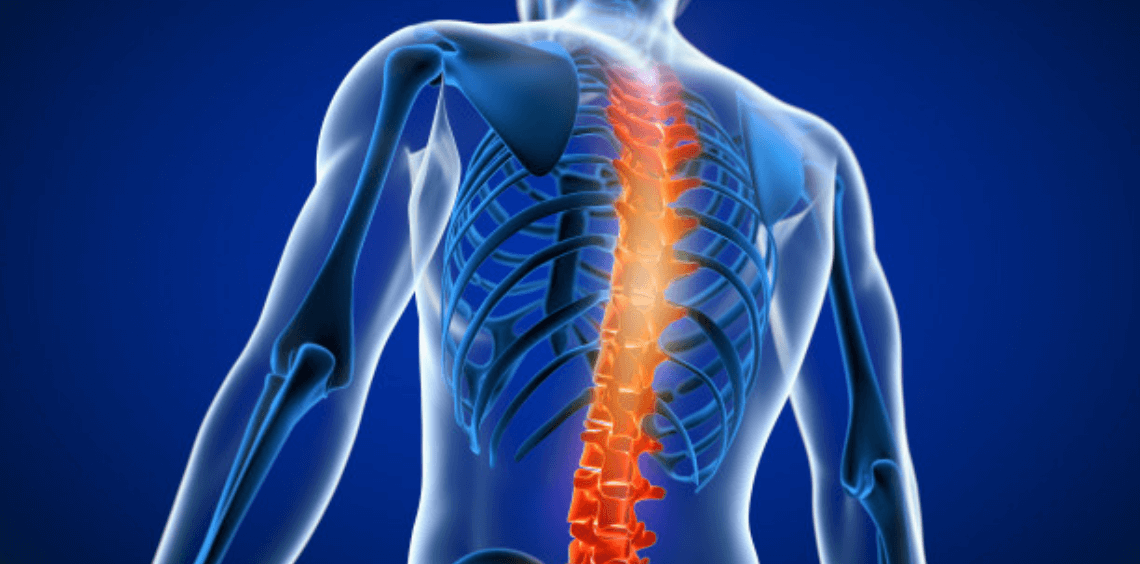Advanced Spine and Pain: How They Are Revolutionizing Backcare?
Back pain can affect your daily life as well as your general health. Traditional treatment methods have been based on medication and physical therapy. In more severe cases, surgery may be required. Advanced spine and chronic pain clinics have revolutionized back care by using innovative approaches. This offers new hope to patients suffering from chronic back pain […]

spine pain management
Back pain can affect your daily life as well as your general health. Traditional treatment methods have been based on medication and physical therapy. In more severe cases, surgery may be required. Advanced spine and chronic pain clinics have revolutionized back care by using innovative approaches. This offers new hope to patients suffering from chronic back pain and spinal conditions. This article explores these specialized centers’ efforts to transform the field by using cutting-edge techniques, personalized care, and integrative treatments.
- Innovative Diagnostic Technologies
Advanced spine and pain centers are transforming back care through the use of state-of-the-art diagnostic technologies. Traditional diagnostic methods like X-rays or basic MRIs can provide only limited information regarding the underlying causes of pain. Advanced clinics have begun to incorporate more sophisticated diagnostic techniques, such as CT-myelography or functional MRI.
These advanced image technologies provide a more accurate and detailed diagnosis of spinal disorders. For example, functional MRI allows you to see how your spinal structures interact when moving, giving you insights that static imaging would miss. This level of detail helps clinicians arrive at a precise diagnosis and then tailor treatment to target specific pain causes.
- Minimally Invasive Procedures
Conventional spine surgery may involve large incisions, protracted recuperation periods, and intense pain after the procedure. Pain management clinics and advanced spine clinics are increasingly using minimally invasive techniques, which reduce these risks without compromising the effectiveness of treatment. Techniques such as endoscopic spinal surgery and percutaneous Discectomy require smaller incisions and specialized tools to diagnose and treat spinal issues more precisely.
Minimally invasive procedures are associated with several benefits. These include less tissue damage and shorter hospital stays. Patients who receive these treatments typically experience less pain after surgery and can return more quickly to their normal daily activities compared to those who use traditional surgical methods.
- Regenerative Medicine
Advanced spine and pain centers are also making great progress in regenerative medicine, which uses the body’s natural healing process to repair or regenerate damaged tissue. For chronic pain and spinal problems, stem cell therapies and platelet-rich plasma (PRP) are becoming increasingly popular.
The PRP procedure involves injecting a concentrated platelet solution from the patient’s blood. These platelets also contain growth factors to promote tissue healing and reduce inflammation.
- Personalized Pain Management
Pain management at advanced spine and cancer pain clinics has become more comprehensive and individualized. While traditional approaches tend to be one-size-fits-all, advanced pain clinics are focused on providing individualized treatments tailored to patients’ specific needs.
Personalized pain treatment may combine pharmacological and physical treatments, cognitive-behavioral counseling, acupuncture, and massage. Advanced clinics frequently use detailed patient histories and pain assessments to create custom treatment plans.
- Integrated Multidisciplinary Treatment
One of the most important features of modern spine and pain centers is their multidisciplinary, integrated approach to treatment. These clinics are often staffed by a team of specialists that includes spine surgeons, physical therapists, chiropractors, and psychologists.
This collaborative method allows for an integrated approach to treatment, taking into account not only physical factors of backache but also emotional or psychological factors that can lead to chronic pain. By coordinating care between multiple disciplines and advanced spine and back pain clinics, they can provide an effective and comprehensive treatment plan.
- Rehabilitation Programs
Rehabilitation is an essential component of spinal treatment. Leading clinics use cutting-edge techniques to optimize recovery and achieve better outcomes. These programs usually include advanced methods such as aquatic therapies, functional movement, and exercise regimens tailored to the individual.
In addition, some clinics have educational programs that teach patients about posture, ergonomics, and lifestyle modification to prevent future problems. Advanced spine clinics and pain management centers combine innovative rehabilitation methods with patient education to achieve long-term results and maintain spinal health.
- Research And Innovation
Spine and pain clinics that are advanced in their field often lead the research and innovations for spinal care. Many clinics actively participate in research and clinical studies that aim to develop new treatments and improve those already available. This commitment to the research field ensures that patients will benefit from new advancements and treatments in spinal care.
Conclusion
A multidisciplinary approach, personalized pain treatment, regenerative medical treatments, innovative diagnostics, and minimally invasive techniques are all part of advanced spine and chronic pain clinics. These advancements provide new hope for those who suffer from chronic spinal pain and offer tailored, efficient solutions to improve their quality of life and outcomes. These clinics are constantly pushing the boundaries for spinal care. Patients can look forward to even more breakthrough treatments and improved options in the near future.
